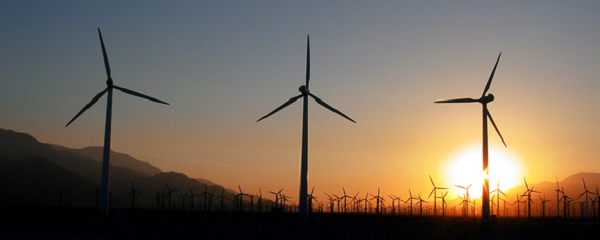Energy consumption is a seemingly reliable part of our everyday lives, but recent studies show that Americans are using energy faster than we can produce it. This means that keywords like renewability and sustainability are at the forefront of the national conversation on energy production. Going “green” seems to be a popular solution, as many U.S. cities plan to run entirely on renewable energy in the coming years.
But what does that mean for electricians?

As we’ve mentioned before, the U.S. Department of Labor projects a significant increase in jobs for electricians due, in part, to renewable energy sources, like sunlight, wind, tides, rain and geothermal heat. New demand, new technology applications and changing infrastructure all support this projected growth.
- Demand to Create and Retrofit
More skilled workers will be needed as alternative energy, including wind and solar power, production grows. These projects will require a combination of new and existing skills to commission new generation systems and tie the systems together with existing electrical networks. Electricians should expect an increasing demand for skilled workers to install and link these sources to power grids and homes. According to Jim Johnson, senior mechanical engineer for the National Wind Technology Center, wind energy alone has the potential to create “hundreds of thousands of jobs for electricians and electrical contractors.”
- New Technology in the Field
Electrical workers also will be needed to perform installation, operation, and maintenance functions in more industries in coming years, as automation and electrical components become the norm in more fields. For example, electricians should expect more work in manufacturing as plants install and maintain complex automation and tracking systems.
- Aging Electrical Infrastructure
U.S. infrastructure, including the electrical grid, has been aging and creating reliability issues that have highlighted the need to update modes of energy transmission and generation. Electricians who can handle many different tasks, such as electronic systems repair, solar photovoltaic installation, and industrial component wiring will see a growth of employment opportunity from the infrastructure improvements related to renewable energy.
With renewable energy creating jobs faster than the traditional energy sectors, it is no wonder that electricians will benefit from the crossover to renewable energy. Check out how many U.S. cities plan on or already are converting to run on 100 percent renewable energy:
- Greensburg, Kansas (2013)
- Burlington, Vermont (2014)
- Aspen, Colorado (2015)
- Columbia, Maryland (2015)
- Georgetown, Texas (2017)
- Los Angeles, California (2018)
- East Hampton, New York (2020)
- Lancaster, California (2020)
- Grand Rapids, Michigan (2020)
- Nassau County, New York (2020)
- San Jose, California (2022)
- Boulder, Colorado (2030)
- San Francisco, California (2030)
- Rochester, Minnesota (2031)
- Salt Lake City, Utah (2032)
- South Lake Tahoe, California (2032)
- Santa Barbara, California (2033)
- Pueblo, Colorado (2035)
- San Diego, California (2035)
- Honolulu, Hawaii (2045)
- Portland, Oregon (2050)
- Santa Monica, California
- Las Vegas, Nevada
- Ithaca, New York
- Palo Alto, California
- Del Mar, California
- Scituate, Massachusetts
